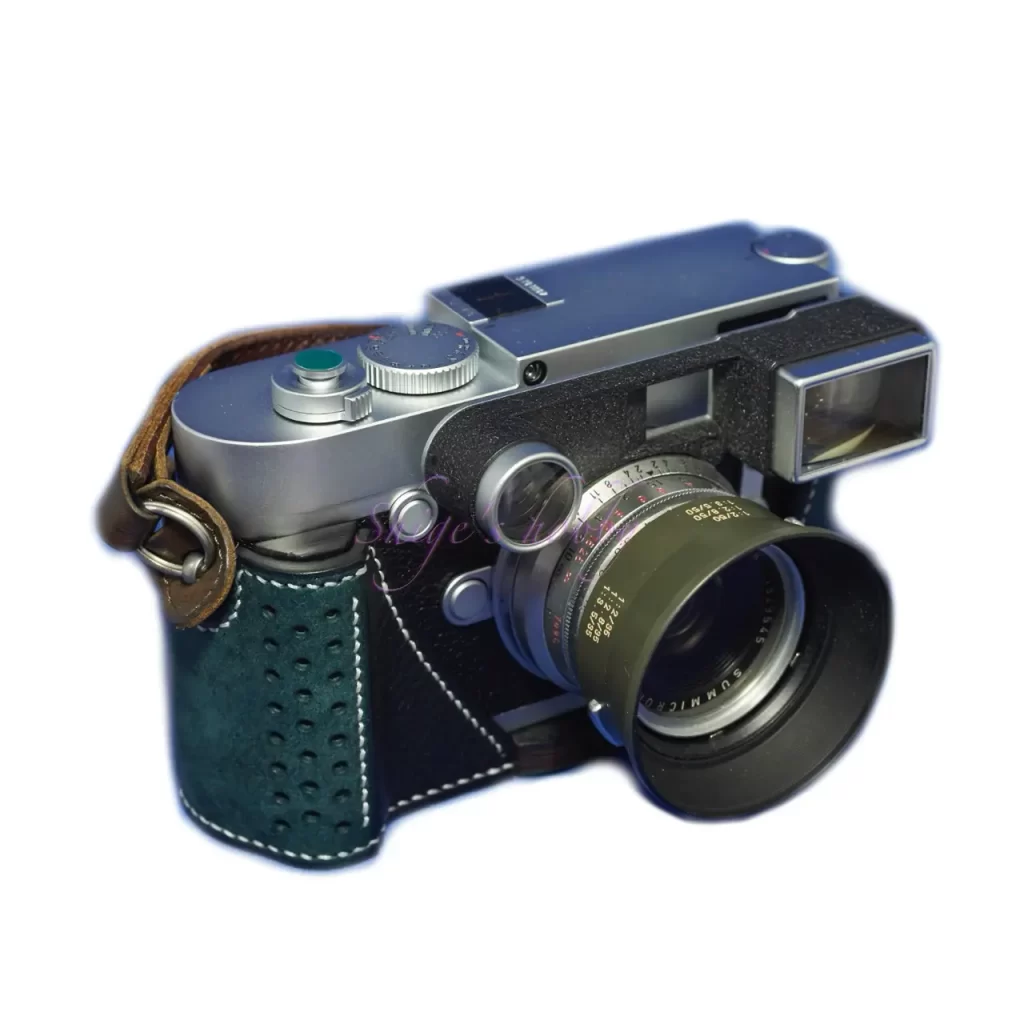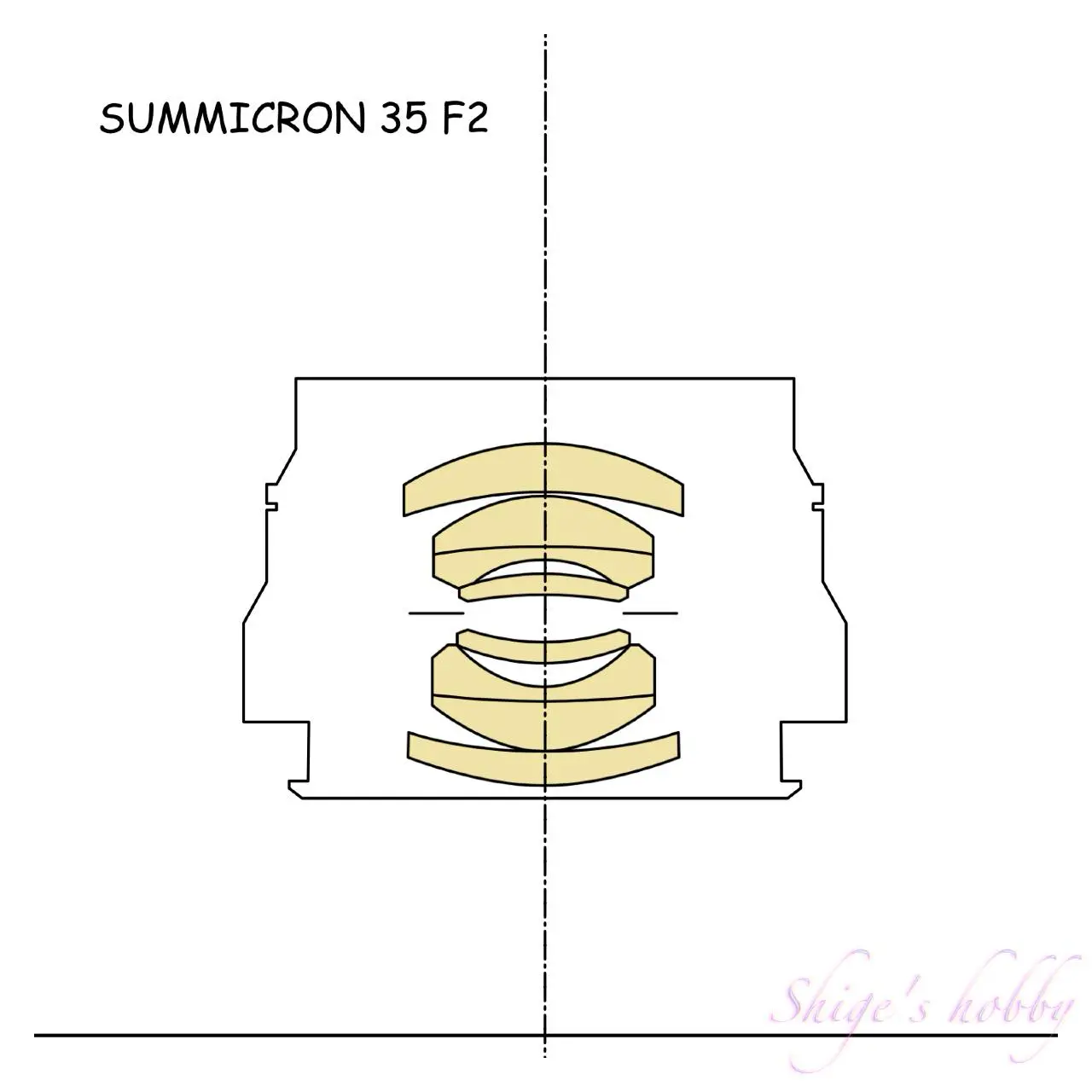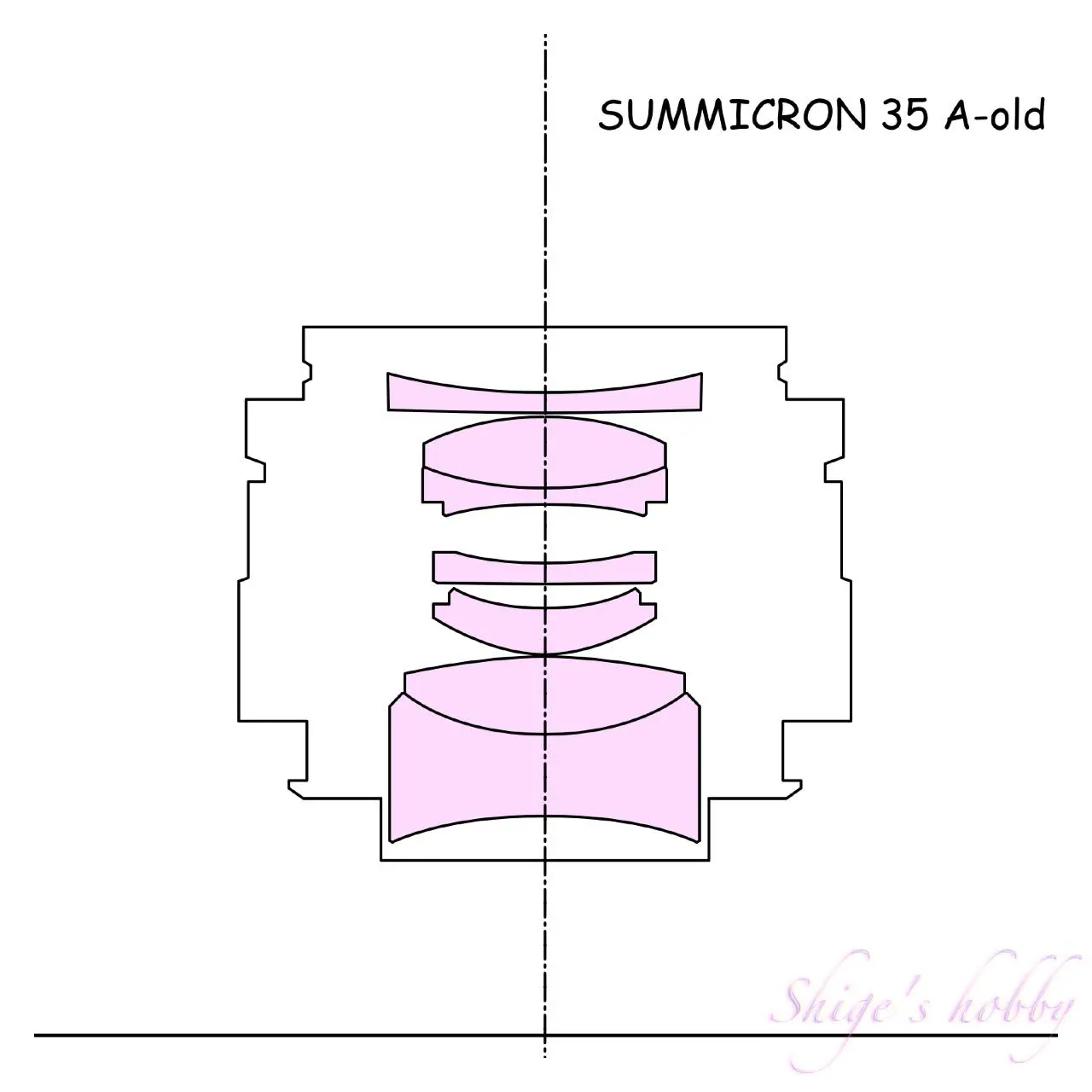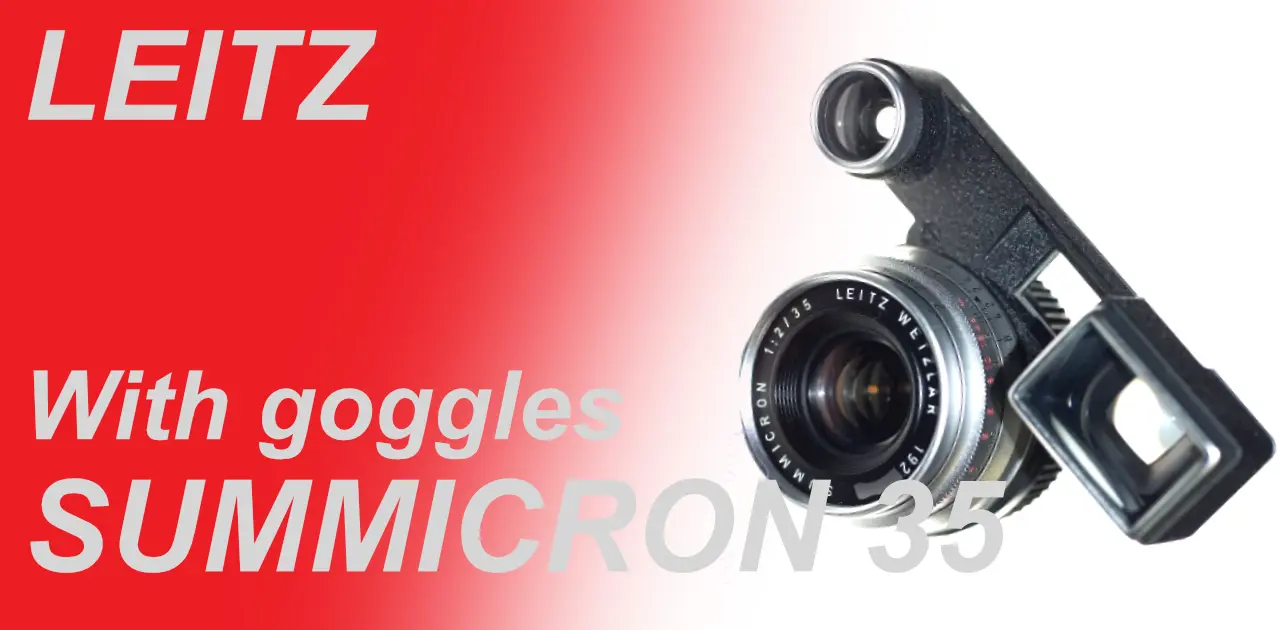A review and sample photos of the LEICA SUMMICRON M 35mm F2 with goggles (8 lenses) used with film rangefinder cameras and digital rangefinder cameras.
- Please see the disclaimer regarding advertising here.
- Italicized links in the text are advertisement links that take you to other sites.
Table of contents
Gallery
The following cameras were used to take the sample photos:
Review

1.Overview
The Summicron 35mm f/2 with glasses, released in 1958, was a lens made for the Leica M3 and was equipped with glasses that widened the M3’s 50mm viewfinder bezel to 35mm.
When attached to an M-series Leica, the viewfinder display bezel was designed to be 50mm, and the 50mm bezel was displayed when the lens was attached to M-series Leica bodies from the M3 onwards.
The minimum focusing distance with the lens with glasses is 0.65m, while the minimum focusing distance without glasses is 0.7m, allowing you to get 5cm closer.
The lens barrel is the same as that of the original Summicron, so the lens hood, named IROOA, can be used. Just like with the Summicron without glasses, there is a stopper on the lens barrel, so the hood cannot be attached backwards.

2.Usability
The SUMMICRON 35mm f/2 with goggles produces images that are typical of an eight-element lens. Its soft aperture allows it to maintain a soft, even aperture-closed setting, without being too harsh, resulting in an exquisitely refined finish. Because it’s an older lens, ghosting and flare can occur in backlit situations without a hood. Since the lens I owned was older, I’m not sure if this is due to lens deterioration.
The lens hood used to protect against backlighting with the M-mount SUMMICRON is well-known as the IROOA model. IROOA hoods are sold by many manufacturers, both genuine and compatible. Some lenses from Cosina’s Voigtlander brand are also compatible with the IROOA hood.
I have obtained and used compatible hoods from several manufacturers, and because the hood shape is an exact replica, I’ve never had any issues with installation or light blocking. While it can be installed upright on this lens, it cannot be installed backwards due to the goggles and stopper.
The lens with goggles has the same appearance as a regular eight-element lens, including the finish and the feel of the stopper. The only difference is that the goggles make it look more ostentatious.
The crepe finish on the lens element is beautiful, and the coating seems durable, showing no signs of peeling despite age and frequent use in and out of the camera bag since purchase.
■ Film Rangefinder Camera KONICA HEXAR RF
The KONICA HEXAR RF is dimensionally aligned with the M-series Leica cameras, so lenses with lens elements can be used without issue.
When used with a film camera, the lens is best used with monochrome film, given its manufacturing date. However, there is no noticeable color breakdown even when used with color film, and the image quality is sufficient for shooting with reversal film, providing ample resolution and depth. Images shot with negative film, which has lower resolution, are likely to have a more retro feel.
■ Digital Rangefinder Camera LEICA M10, LEICA M9
This lens can be easily attached to digital M-series cameras equipped with a 35mm full-frame sensor, and the rangefinder can be linked to adjust the focus. The 50mm viewfinder frame is expanded with the lens element, allowing for a 35mm field of view.
The goggle-equipped lens can be attached to all digital M-series Leica bodies released as of 2025, including the LEICA M8, LEICA M8.2, LEICA M9, LEICA M typ240, LEICA M10, and LEICA M11.
■ LEICA M8 Digital Rangefinder Camera
The lens can also be attached to the LEICA M8, which is equipped with an APS-H sensor. When attached, the lens extends the M8’s 50mm viewfinder frame (equivalent to 65mm in 35mm film format), making the visible viewfinder border the same as a 46mm viewfinder.
When used with the M8’s 10-megapixel lens, the overall softness at wide open aperture is fully expressed, and the peripheral areas, where noise can be noticeable, are cropped, resulting in a more refined overall image compared to images captured with a 35mm full-frame sensor camera.
3.Summary
In conclusion, to sum up, the SUMMICRON 35mm F2 with eyeglasses is a lens that lets you experience the legendary M-type 8-element lens at an affordable price.
It is compatible with both film and digital M-type Leica cameras, so you can enjoy shooting with any camera body you own.
Since the 2020s, the prices of Leica lenses in general have been rising, and this lens has been no exception.
Specification and Competitor
Here we compare an 8-element Summicron with an aspherical Summicron. We can clearly see that the lens construction of the modified Gaussian-type 8-element lens and the latest aspherical Summicron design are completely different.
The “old” notation in the diagram of the aspheric Summicron is used because the shape of the lens barrel is a trace of an older model with a hook-type hood.
Also, when we look at the lens construction diagrams of the 6-element and 7-element lenses, we can see that these two were built with an emphasis on reducing costs compared to the 8-element lens.


A brief description of each Summicron is given below.
- The 6-element lens has always been cheaper than the Summicron 35mm, probably because it is less popular despite the small number of lenses.
- The 7-element lens is relatively expensive, with 50,000 units produced, but it maintains a price similar to the next aspherical type.
- The aspherical type is still a current lens as of 2024, and has a long life and is produced in large numbers. As Leica’s retail price has risen, the used price has also risen accordingly.
- The apotype is a lens from a completely different world, costing over 1 million yen, and is out of reach for poor Leica users.
| Items | 8elements | 6elements | 7elements | Asferical-type | APO-type |
| Focal length | 3.5(cm) | 35(mm) | 35(mm) | 35(mm) | 35(mm) |
| Max aperture | 2 | 2 | 2 | 2 | 2 |
| Min aperture | 16 | 16 | 16 | 16 | 16 |
| Aperture blade | 10 | 10 | 10 | 10 | 11 |
| Lens Construction | 8 elements in 6 groups | 6 elements in 4 groups | 7 elements in 5 groups | 7 elements in 5 groups | 10 elements in 5 groups |
| Min distance(m) | 0.7 goggles 0.65 | 0.7 | 0.7 | 0.7 | 0.3 |
| Lens length(mm) | 29 | 33 | 26 | 34.5 | 40.9 |
| Lens Max diameter(mm) | 51 | 51 | 52 | 53 | 53 |
| Filter Size | E39 | E39 | E39 | E39 | E39 |
| Lens hood | IROOA | 12504 12585 | 12524 12526 12504 12585 | 12524 12526 12504 12585 | 専用ねじ込み |
| Lens mount | M | M | M | M | M |
| Weight(g) | 195 * | 170 * | 160 * | 255 * | 320 ** |
| Release date | 1958~ * | 1696〜 * | 1979〜 * | 1996〜 * | 2021〜 |
| Production numbers | 38,000 units * | 28,000 units * | 50,000 units * | 110,000 units * | Unknown |
**:No official weight figures have been released.
Reference links
- Summicron 35mm f2 description page by LEICA Wiki
- Summaron 35mm f2.8 description page by LEICA Wiki
- Summaron 35mm f3.5 description page by LEICA Wiki
- Leica APO-Summicron-M f2/35mm ASPH. official page
- LEICA M10・Shige’s hobby
- LEICA M9・Shige’s hobby
- LEICA M8・Shige’s hobby
- LEICA SUMMICRON M 35mm ASPH.・Shige’s hobby
- LEICA SUMMICRON M 35mm 6elements.・Shige’s hobby
- KONICA HEXAR RF・Shige’s hobby
- KONICA HEXAR RF Limited・Shige’s hobby
Affiliate links
- Leica Lens・Ads by Amazon
- Leica Books・Ads by Amazon

Update history
- 2025.10.12
- 2024.12.16



Be First to Comment